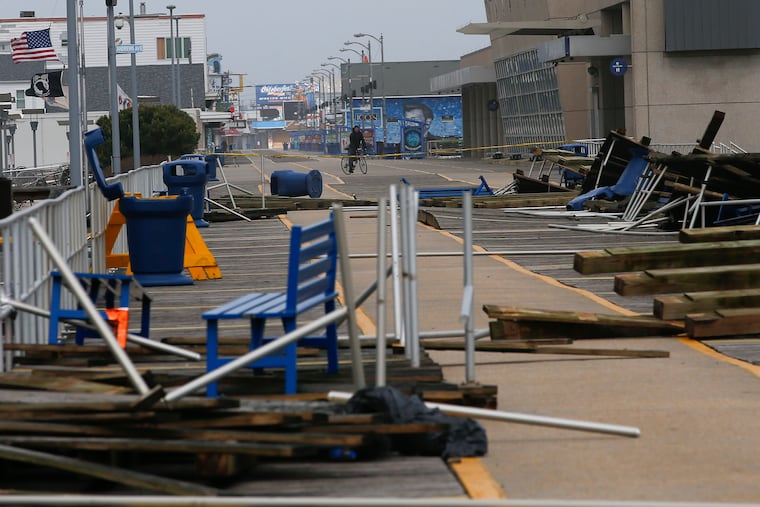Philly’s gloomy weather has been matching the national mood. And it might be about to get worse.
Most days during the last five weeks have come with a generous supply of clouds, a scarcity of clear days, and a chill that meteorologists now say is likely to persist into May.

In measurable and immeasurable ways, on most days during the last five weeks the weather around here has been a fitting complement to the national mood, with a generous supply of clouds, a scarcity of clear days, and a chill that meteorologists say is likely to persist into May.
And if it seems as though the atmosphere itself has come down with something, shortness of breath hasn’t been one of the symptoms.
The Philadelphia region has experienced an unusual sequence of wind events, with gusts of 25 mph or better on 22 days in the last five weeks, including gale-force gusts on seven of those, and three with 50 mph winds or better.
» READ MORE: Winds gusting to 70 mph roar through Philly region; power outages widspread
Five times in the last week, at least parts of the region have been under frost or freeze advisories.
Wednesday was an anomaly in Philadelphia in the age of the coronavirus. Officially it was clear, only the fourth such day since March 20, about half of normal.
For all that, some folks might look back fondly on the recent weather. Evidently, it’s about to deteriorate.
“With the pattern expected to stay active probably right through the end of next week, we’ve got multiple chances for rain,” said Jack Boston, a meteorologist with AccuWeather Inc. who specializes in analyzing longer-range patterns. “We’re likely seeing our temperatures stay below normal for the rest of April.”
Whatever happened to April?
The month did get off to a mild start, but temperatures have been below normal for nine consecutive days. That hasn’t happened since the end of February into early March of 2019.
The region and much of the nation have been chilled by a global pattern flip that is about two months late for snow lovers and the eastern ski industry.
» READ MORE: When winter doesn’t come: Here are the winners and losers of Philly’s nearly snowless season
“This would have been such a great snow pattern if it occurred during meteorological winter,” said Judah Cohen, a scientist with Atmospheric & Environmental Research in Massachusetts.
A major player has been the so-called North Atlantic Oscillation, an indicator based on the contrasts of air pressure over the Arctic and the north-central Atlantic. When pressures are higher near the pole, as they have been recently, colder air tends to pour into the eastern United States. The NAO was in the opposite phase all winter, said Boston.
At the same time, sprawling high pressure in Yukon has been exporting cold air. Winds circulate clockwise around centers of highs, so winds to the east of the center are from the north and northwest. One symptom of the export factor: Anchorage, Alaska, was quite cool early in the month, but temperatures have been 2 to 6 degrees above normal during the last several days.
“The coldest circulation in the Northern Hemisphere has actually been dragged down from the polar regions,” said Boston. “So we get cold-air shot after cold-air shot.”
Rainfall has been close to normal, but Boston said that’s probably the result of luck, and in his view and the National Weather Service’s, that luck is about change.
Wet times ahead
Boston said the subtropical jet stream, which is a major storm expressway that delivers precipitation to the East, has been quite active.
The South has been drenched by heavy rainstorms, as have areas to the north of the Philadelphia region. Boston said we’re about to get our turn.
» READ MORE: Storms tear through South amid pandemic; more than 30 dead
Clouds return Thursday. Rain is likely late in the day and is expected to continue through much of Friday, Boston said. Another dousing is possible from Saturday night on into Monday, and maybe yet another in the middle of the week.
Daytime highs will be in the upper 50s and low 60s, as much as 10 degrees below normal.
And all signs indicate that it’s wise to keep the sweaters handy.
“That kind of coolish pattern is going to linger into May," said Boston. Both the Climate Prediction Center and Cohen concur.
Said Boston, “I’d be really shocked that it does any better than low 70s in the first half of May.”